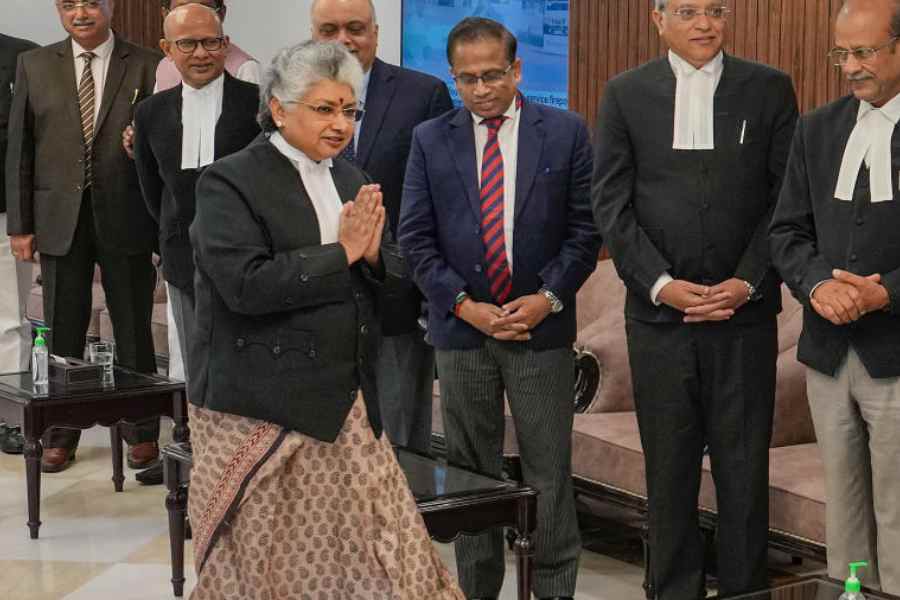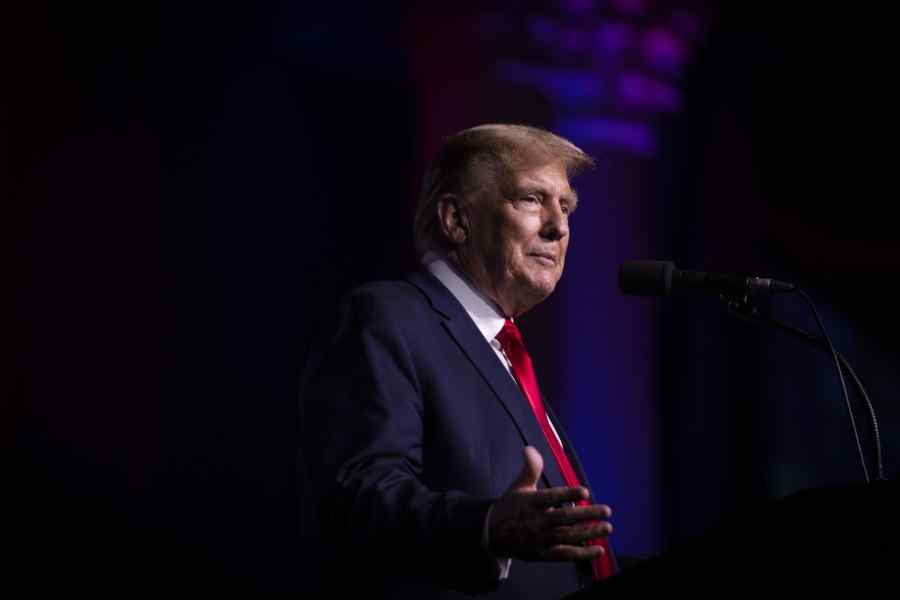The Supreme Court judge, Justice V. Nagarathna, has made scathing remarks on the November 2016 demonetisation, saying it was “a way of converting black money into white money”.
The judge, on course to become the country’s first woman Chief Justice in September 2027, also complained that nobody knew what had happened to the subsequent income-tax proceedings on the black money.
Her comments came in a speech yesterday at a conference on “Courts and Constitution”, organised by the Nalsar University of Law, Hyderabad.
Justice Nagarathna was the lone dissenter on the five-judge constitution bench that had by 4:1 majority, on January 2 last year, upheld the validity of the Narendra Modi government’s decision to demonetise Rs 1,000 and Rs 500 notes on November 8, 2016.
However, while delivering her dissenting judgment — on the ground that the demonetisation was not carried out in keeping with legal principles — Justice
Nagarathna had complimented the government for its “noble intentions”.
She had said the move was “targeted to address disparate evils plaguing the nation’s economy, including practices of hoarding ‘black’ money, counterfeiting, which in turn enable even greater evils, including terror funding, drug trafficking, emergence of a parallel economy, money laundering including havala transactions”.
Her critical remarks yesterday marked a sharp contrast with these observations from a year ago.
At the conference in Hyderabad, she said: “We all know what happened on 8th November, 2016, when Rs 500 and Rs 1,000 (notes) were demonetised. The interesting aspect at that time and in the context of the Indian economy (was that) 500 rupees and Rs 1,000 notes comprised 86 per cent of the (cash) economy.”
She added that this was what “the central government lost sight of” while deciding on the demonetisation.
“Imagine a labourer who went to work those days (and) who was given a 1,000-rupee note or 500-rupee note at the end of the day. He had to go and get it exchanged before he went to the grocer’s shop to buy the daily essentials!” she said.
“And the other aspect is that 98 per cent of (the) 86 per cent… demonetised notes came back to the Reserve Bank of India. So where were we heading for the eradication of black money?”
She added: “I thought it was a way of converting black money into white money by this demonetisation, because firstly 86 per cent of the currency was demonetised and 98 per cent of the (demonetised) currency became white money. All the unaccounted money went back to the bank. Therefore, I thought it was a good way of unaccounted cash becoming accounted.
“But what has happened with regard to the income-tax proceedings and all, we don’t know. Therefore, this common man’s predicament stirred me; therefore I had to dissent… about which I don’t like to speak about.”
Justice Nagarathna further said: “I am not sure: some people say the finance minister of the day did not know about it. What I hear, nobody knows about it. The communication went one evening, the demonetisation happened the next day.
“If India really wanted to go from paper currency to plastic currency, surely demonetisation of currency was not the reason for that.”
In her dissenting judgment, Justice Nagarathna had been far kinder to the government.
“It is beyond the pale of doubt that the said measure (demonetisation), which was aimed at eliminating these depraved practices, was well-intentioned. The measure is reflective of concern for the economic health and security of the country and demonstrates foresight,” she had said.
“At no point has any suggestion been made that the measure was motivated by anything but the best intentions and noble objects for the betterment of the nation. The measure has been regarded as unlawful only on a purely legalistic analysis of the relevant provisions of the act and not on the objects of demonetisation.”
Justice Nagarathna had upheld the central government’s power to demonetise currency notes subject to a recommendation from the RBI. But she held that “the manner in which it was done was not correct and decision-making process was not in accordance with law, was wrong, there was arbitrariness, the non-exercise of discretion, the consultation process being captured, the haste with which it was done”.
She had said a demonetisation could be done only through an ordinance issued by the President, followed by an act of Parliament, or by plenary legislation through Parliament. She had ruled that the 2016 exercise had breached these norms.
Justice Nagarathna had headed the bench that, on January 8 this year, quashed the premature release of the 11 convicts in the Bilkis Bano gang-rape and mass murder case.
The bench, which included Justice Ujjal Bhuyan, ruled that the Gujarat government lacked the power to decide on the convicts’ remission and that the order for their release was “vitiated” by “fraud”.










